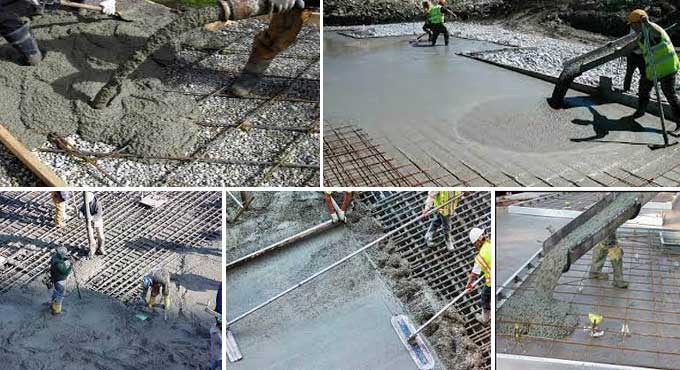
A Guide to Concrete Placing: Important Rules and Precautions

Concrete Placing can be defined as pouring concrete into formwork to achieve a predetermined shape and size. The placement of concrete is an indispensable process in the construction of a structure that determines its success and its lifetime. While setting concrete, technical and environmental considerations are taken into account.
Do not Segregate
Concrete is frequently placed without regard to segregation during the concrete's placement. A vertical position is required for the concrete as close as possible to its final position. You should not allow it to flow into position once it has been completed. It is necessary to shovel concrete into its final position when it must be transported.
Depending on the type of element being created and the type of distribution equipment used, other techniques for neglecting segregation can be applied. Various methods can be used to place concrete for flat work and slabs that include ribs and beams.
In the case of columns and walls which are poured from a height, the concrete might bounce off reinforcements resulting in segregation between the faces. There are various ways to evade this depending on the distribution equipment used.
Compaction Process
Concrete should be layered to a depth suitable for the compaction gear in order to aid in subsequent compaction. Overly deep layers make it practically impossible to adequately compact concrete, resulting in voids and blow holes on the surface, preventing it from achieving its strength and durability potential.
Immersion vibrators and vibrating beam screeds are two types of compaction equipment. In an immersion vibrator, its effective radius depends on its frequency and amplitude.
Concrete construction standard sizes include an action radius between 200 and 350 mm. Concrete should be positioned in uniform layers between 250 and 400 mm, depending on the vibrator. Vibrators should penetrate 150 mm into the lower layer in order to ensure each layer is properly melded together.
Concrete Placing Precautions
1. Concrete surfaces should remain sharp, straight, and unbroken throughout the placement process.
2. A concrete layer of one thickness should be used whenever possible.
3. Concrete in deep sections should be poured in successive horizontal layers, and sufficient bonds must be developed between successive layers.
4. A concrete position as close as possible to this will be prepared. It is not recommended to deposit large amounts of concrete at once. It will not have a uniform composition if the concrete flows along the formwork.
5. A proper height must be used when pouring concrete vertically. It is important to use a stiff mix when laying concrete vertically.
6. A crack in a form will allow concrete to leak through. When concrete runs through formwork, it is referred to as bleeding.
7. A continuous concrete placement should be achieved between predetermined joints in the construction.
8. A horizontal layer of concrete with a height of 150 mm should be deposited. Concrete layers can be as high as 400 mm for mass concrete.
9. To control laitance, shallow layers with stiff mixes or dry batches of concrete should be used to soak up excess water in the upper layers.
10. A honeycomb surface should not occur at the disposal of the formwork by simply working the concrete around the reinforcement and tapping it.
11. In such a case, the concrete surface would look like a honeycomb if this precaution is not taken.
To learn more, watch the following video tutorial.
Video Source: Concrete Network
12. Immediately after placing the concrete on the formwork, it needs to be leveled.
13. Nevertheless, it should not be positioned within 30 minutes of being prepared.
14. A clean, prepared, and well-watered surface must be used for the construction of new concrete forms.


